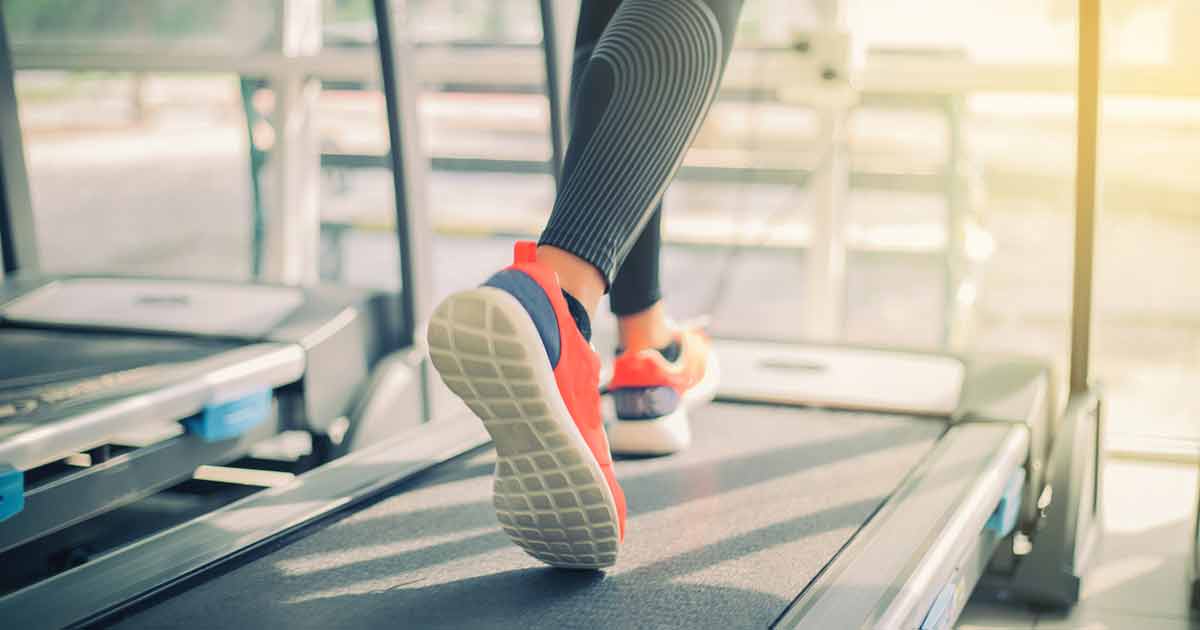Advice to improve your movement, fitness, and overall health from the world's #1 in orthopedics.
Gait Analysis for Runners: What to Expect and How It Can Help
How can a gait analysis help you be a better runner? Learn more from HSS running coach Kate Baird.
Advice to improve your movement, fitness, and overall health from the world's #1 in orthopedics.
Whether you’re a new runner or you’ve got a dozen marathons under your belt, a gait analysis can be beneficial to everyone. “New runners can benefit from learning about good form from the get-go,” says Kate Baird, MA, ACSM-CEP, CSCS, an exercise physiologist on the Sports Rehabilitation and Performance team at HSS. “And seasoned runners may have developed some running patterns that are not optimal and that reduce performance and strain the body and may lead to injury.”

Why to Get a Gait Analysis
Running with the right form helps prevent overuse injuries like shin splints, stress fractures, runner’s knee and IT band syndrome. “Running is a high-impact activity that puts your body under repetitive load, pounding on each leg over and over again,” says Baird.
Good form also helps you move more efficiently and more comfortably, and, not surprisingly, faster. “Proper running mechanics help you use the ground forces to propel you, so you exert less energy and reduce excessive movement, optimizing your running performance,” she adds. “That makes you run faster, stronger and with great power.”
All these things come from how strong and balanced your muscles are, your foot strike, stride length, cadence, running form and more, all of which can be examined at a gait assessment.
All that being said, not everyone has the same body and there’s no such thing as “perfect” running form. Everyone has their own unique running style that works best for them. “That’s why a gait assessment can be so useful, because a clinician can help you optimize your running form,” says Baird. “It’s not about running perfectly; it’s about running well in the frame you have.”
How a Gait Analysis Works
A running assessment is often done by physical therapists and exercise physiologists, but coaches and trainers sometimes offer them as well.
Expect some combination of the following:
A postural assessment, where you’ll stand barefoot in a relaxed position. The evaluator will look at you from the front, side and back to appraise how you hold your body in space, including:
- The position of your head on your neck
- The symmetry and roundedness of your shoulders
- The curvature or stiffness in your upper, mid and lower spine
- The location of your pelvis in relation to your hips and back
- The symmetry and internal or external rotation of your hips
- The position of your knees
A muscular assessment, in which the therapist will have you perform several different exercises from the bottom to the top of your body to evaluate muscle strength, endurance, range of motion and flexibility of the lower limbs, spine and core.
Some of the movements could be:
- Single-leg calf raises, which measure the strength and endurance of each calf and Achilles.
- Single-leg hops, which demonstrate how well the calf complex absorbs loads and creates tension.
- Bulgarian split squats, which test balance and hip control, as well as the ability to generate force through the leg complex.
- Single-leg glute bridges, which assess the strength and endurance of the lower posterior chain, including the glutes and hamstrings.
- Step downs, which look at how your hips, hamstrings and quads work together to help the kneecap bend properly, as well as your ankle mobility as you keep one foot on a step and lower the other leg down to the ground.
- Jumps in place, which test your ability to react off the ground, demonstrating how much power you produce and strength you have to get yourself up in the air, as well as the flexibility of your feet and ankles in order to land gently.
- Side planks, which gauge the endurance of the side of your hip and oblique muscles.
- Double-leg squats, which measure lower body strength, particularly the quads, glutes and hip stabilizers.
- Big toe extensions, which look at how far your big toe can stretch up a wall while the ball of your foot is planted. If there’s an issue with how your body progresses over your planted foot as you run, you’ll likely compensate from the leg or lower back.
A gait assessment, in which you will run, likely on a treadmill, and the therapist will watch you from the front, sides and back. They’ll be able to see the number of steps you take per minute (cadence), ground contact time and how high you go during each stride (vertical oscillation). The therapist will also be able to analyze your running form, including your ankle, leg and trunk leans, the angles of your pelvis and the position of your knees, shoulders and neck.
All of these evaluations can also be done virtually, as long as you have a place to run and someone to film you from the front, sides and back.
Afterwards, you’ll likely get a written report detailing all of the findings as well as recommendations to address any issues that were identified during the test.
The Running Mechanics Analysis at HSS is a full assessment of how you run. It examines flexibility, strength and stability, and, using Dartfish 2-D analysis, it records your gait from all sides. Therapists then analyze the findings and create a plan of how to fix your form and function. You’ll also receive a report highlighting everything discussed, pictures of you running and suggestions on next steps. To learn more, visit Running Gait Analysis | HSS Performance and Wellness.
Published 10/2/2024
About the Expert
Emily R. Dodwell, MD, MPH, FRCSC
